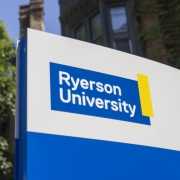If you’re torn between investing in either RRSPs or real estate, don’t be.
Calum Ross, a leverage wealth expert and VERICO broker with Mortgage Management Group—and author of The Real Estate Retirement Plan: An Investment and Lifestyle Solution for Canadians—says Canadians should invest in both. Ross will be discussing that and more at this year’s Investor Forum on March 2 at the International Centre in Mississauga.
“People have a tendency to think of either RRSPs or real estate investing for their retirement plan,” Ross told CREW. “The reality is that consumers need both.”
The reason is that, in addition to diminishing rates of return, a growing number of Canadians these days don’t have defined contribution plans, which still don’t even give guaranteed payouts. Consequently, they need higher amounts of forced savings.
“When you consider the vast majority of Canadians’ wealth is tied up in their homes, the only solution to RRSP, TFSA, RESP, or investment savings catch-ups is essentially in the home equity of their property,” continued Ross. “When you consider the fact that life expectancies now are moving towards 90 years old, the probability that your registered savings account lasts a lot longer than your mortgage is very high. What we’ve been doing is engineering investment products to ensure that the rate of return exceeds the cost of borrowing.”
Ross defines retirement not as the point at which somebody stops working, but rather as the point at which they no longer need to work. If someone has enough money in their investment accounts, debts are easily repaid in full and a mortgage becomes an instrument that is acquired by design and not out of necessity.
Moreover, Ross notes that real estate investing doesn’t have the same tax deferral on capital gains that RRSPs have. He recommends using home equity appreciation as an RRSP catch-up.
Cash flow is still an important component of investing, and that means investors should seek blue-chip properties that they own directly. Of course, choosing the right property is an altogether different task.
“Picking a property depends on the current state of the economy, as well as its projected state,” said Ross. “It’s not just about the actual property today, it’s also about where the underlying economic fundamentals will be in five or 10 years, and the two biggest predictors of where a property will be are actual net migration of population inflow—because there will be housing demand—and areas with strong GDP growth.”
Toronto, for example, has strong population inflow, which is creating housing demand so strong that supply cannot maintain pace, but it’s also a geographical location wherein values have skyrocketed. Ross says that properties that cash flow positively will help meet the Canada Revenue Agency’s deductibility elements.
As for RRSPs, they offer diversified access to a number of different market options, but in tandem with real estate, investors are better shielded.
“If you put money in RRSPs and you take it out, you’re penalized, but in real estate the monthly payment has forced savings mechanisms,” he said.







 Maziar Moini, Broker of Record - Home Leader Realty Inc.
300 Richmond St. W., #300, Toronto, ON M5V-1X2
Maziar Moini, Broker of Record - Home Leader Realty Inc.
300 Richmond St. W., #300, Toronto, ON M5V-1X2



